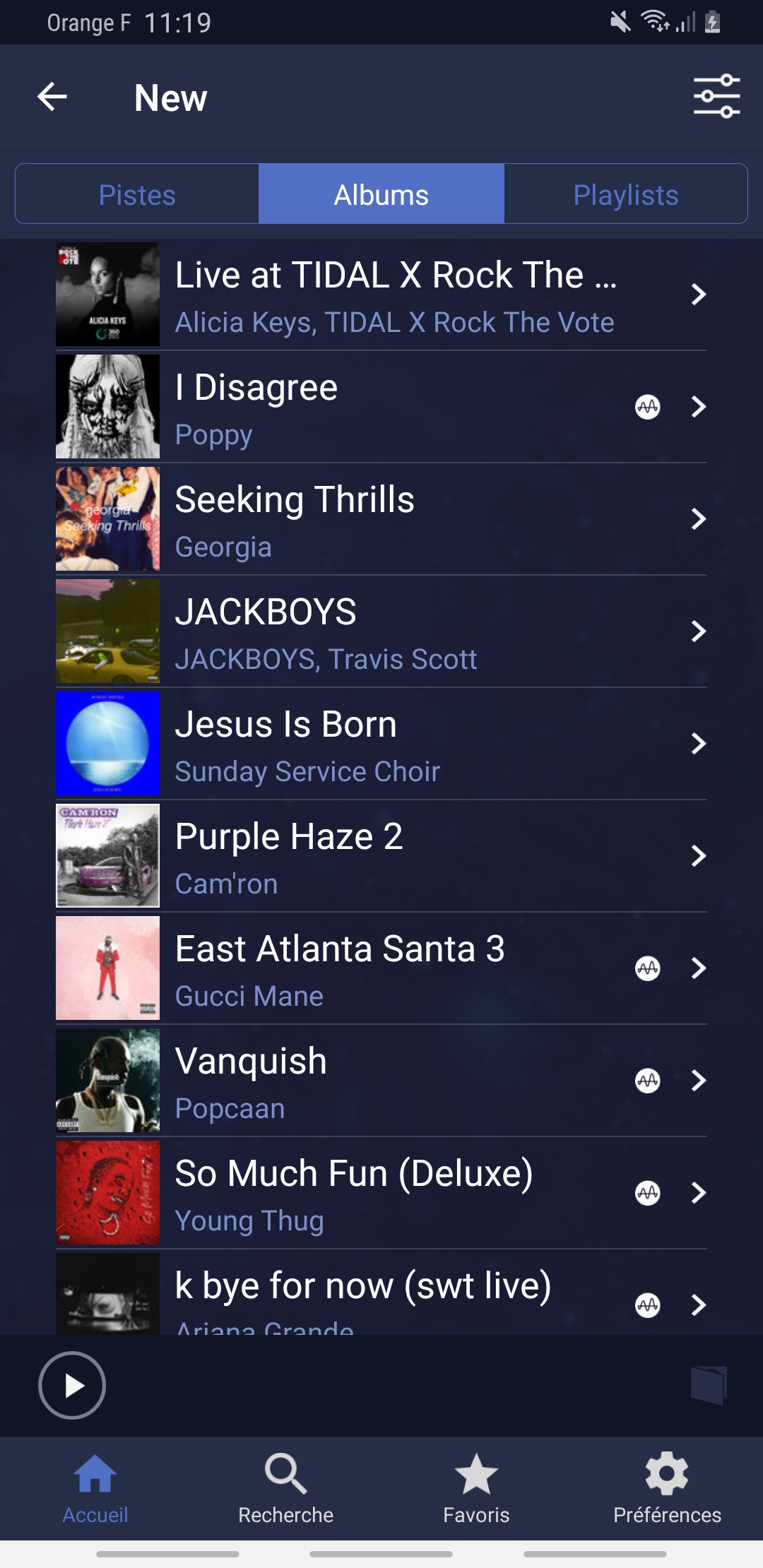

- #Audirvana mqa blue light install
- #Audirvana mqa blue light manual
- #Audirvana mqa blue light full
- #Audirvana mqa blue light Bluetooth
= AUDIO DEVICE =ĬoreAudio audio path, buffer I/O frame size: 512 Library database path: /Users/danielgeiger/Library/Application Support/Audirvana/AudirvanaPlusDatabaseV2.sqlite ITunes/Music library synchronization: not synchronized I also have a Dragonfly Red, plugged that in, and it was read correctly as MQA auto Note that this is with me having already manually configured the Dragonfly Cobalt. is rather messy, as in pop the main identifier is the band (not the composer), but in classical the main identifier is the composer (not the orchestra/performer). Having a mixture of classical and “pop” s.l.

There are a few other odd things, like a Soloist is automatically added to the Artists field, so there are lots of empty Artists icons in the Artist view. For instance, include all Genre = Classical, but exclude Period = Medieval, which leaves Renaissance and Baroque in.

Also not sure whether one can use boolean operators. It would be good to have a real example in the help file. I try to get a bit better understanding of the smart playlists. Otherwise Audirvana will not recognize the files at all. I now realize that the files need to be named:īand name - Album name - 01 Song name.flac The way I organize it, it isĭirectory for Band, Directory name = Band nameĭirectory for Album, Directory name = Album name Last but not least, it took me quite a while to figure out required naming conventions for files. That particularly applies to Airplay locations and also to the Dragonfly. Defeats the purpose of having a Audirvana output selection to begin with, as I now have to switch audio out in two places. Was my old main computer, so use that one as dedicated music computer with Audirvana, VinylStudio and dbpowerbase on it.Īnother thing that is weird is that I have to select output in MacOS preferences, before it becomes available as an option in the speaker pull-up in Audirvana.
#Audirvana mqa blue light install
The dedicated music server runs on OS 10.15 (Catalina) clean install of two days ago, on a Mac Pro late 2013 (aka: soup can). One mistake I made, on my macbook I am still on OS 10.14 (Mojave), haven’t updated that one yet. So the Dragonfly Cobalt MQA problem is in the current version. Just checked for updates, but was up to date with v. I am a brand new user, so installed the most current version two days ago. Here you can find an interesting reading about MQA MQA is a flac container where the pcm format has been treated with MQA proprietary coding technology and needs an MQA compliant sw and/or dac to be decoded, if no compliant sw and/or dac is available the MQA file will be played as 16/44.1. Pcm is the format and flac is the container of that format, other containers are aiff, alac.ĭsd is a different format and can be played to a capable dsd dac
#Audirvana mqa blue light full
You have to be aware that df cobalt can do up to 24/96 then you cannot reach the full MQA resolution that is 24/192.
#Audirvana mqa blue light manual
You can check if MQA is recognized as a blue led will light on on your df cobalt while playing MQA files, see here the user manual

I have also added the Jeep Wrangler to the list of things I am enthusiastic about.I do not own the df cobalt anyway … you don’t need to go back and forth through the settings menu, set it and forget.Īudirvana should recognize the df cobalt, if not … your cobalt is a renderer according to this faq page Home of the Tigers, Grizzlies, Elvis, Al Green, Stax, Hi Records, Ardent Studios, Beale Street, Peabody Ducks, etc.
#Audirvana mqa blue light Bluetooth
However, Yamaha does have something called “compressed music enhancer” that I believe makes Bluetooth sound a lot better.ĭog loving, Big Green Egg worshiping, Tech enthusiast, residing in Memphis, TN. You could pick up something like the Bluesound Note 2i if you don’t mind spending the extra bucks or try to locate a compatible Airport Express device that got updated with Airplay 2.įor me, if I use the Dot, it is for casual listening. You can use it with an Airplay 2 device, but the Yamaha uses Airplay 1. The HomePod does not have Aux or Bluetooth outputs. However, they don’t make anything similar device right now. I buy so much from Amazon that it really didn’t bug me to have them in my living room, but I definitely prefer Apple’s take on privacy (though it hasn’t been perfect). I won’t go into the privacy issues, but I would definitely recommend researching that if it is a concern. One of the amazing things about the Dot is the price for the performance. Of course, Plex requires a device to run the app continuously. You have to tell Alexa something like “Ask Plex to play Bob Dylan” and it will start playing back via Bluetooth on my Marantz. That being said, I also like to access my own library and installing the Plex skill makes that easy to do. It is just like using the service with the HomePod. I use Apple Music as my main source on the Amazon Dot. As I mentioned, it is easy to control what is playing, but that would depend on what you have access to.


 0 kommentar(er)
0 kommentar(er)
